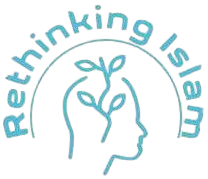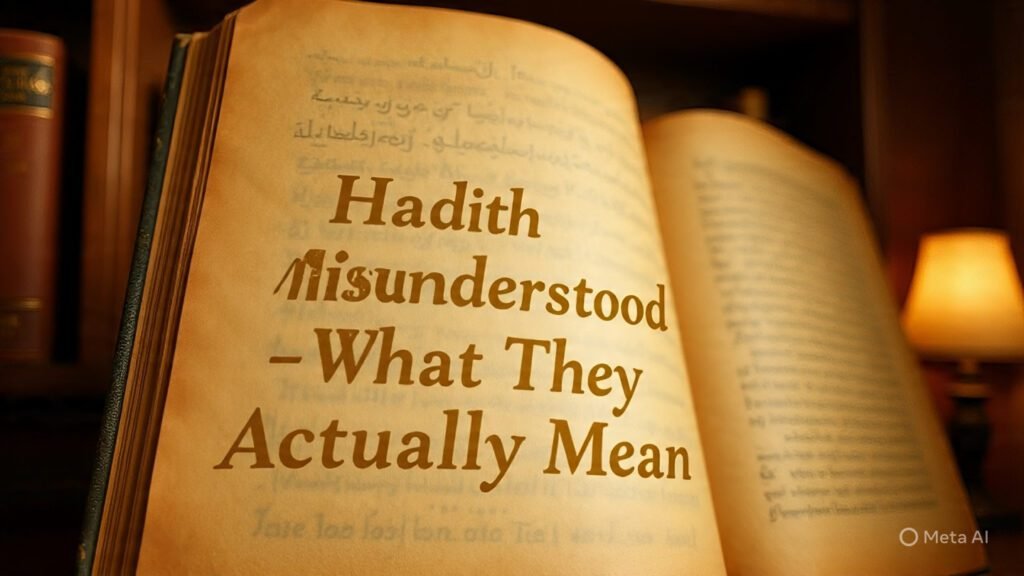Meaning is often lost when individuals misinterpret Hadith, leading to misconceptions that can shape beliefs and actions negatively. In this post, you will explore the true meanings behind key Hadith, addressing common misunderstandings and shedding light on their intended messages. By gaining insight into their context and significance, you can enhance your understanding of Islamic teachings and apply them appropriately in your daily life.
Rethinking the Context of Hadith
Understanding Hadith requires a nuanced approach that considers the historical context in which they were revealed. These texts were produced during a time of significant societal change, and recognizing the influences of that period can offer deeper insights into their meanings. By situating Hadith within the socio-political landscape of early Islamic civilization, you can better appreciate the intentions behind these teachings and how they may be applied in contemporary settings.
Historical Background and Compilation
The compilation of Hadith took place long after the Prophet Muhammad’s passing, a process marked by rigorous scrutiny. Many Hadith were transmitted orally for generations, and the rigorous methods employed by scholars, such as Imam Bukhari and Muslim, ensured only those with strong chains of narration were accepted. This meticulous approach highlights the significance of context and reliability in understanding the teachings.
Cultural Influences on Interpretation
Your interpretation of Hadith is often shaped by prevailing cultural norms and values, which can enhance or distort the original message. Diverse interpretations arise from the ethical, social, and political contexts prevalent in various Islamic societies. For instance, certain Hadith that emphasize egalitarianism might be viewed differently in societies with strong hierarchical structures.
Cultural factors can lead to varying emphases on certain Hadith based on the socio-economic climate or local customs. For example, in some communities, Hadith advocating for compassion and charity may be infused with local customs of hospitality, making them resonate with communal identities. Conversely, restrictive or outdated cultural norms can overshadow Hadith promoting inclusivity or reform, leading to selective adherence that distorts their messages. Such discrepancies underline the necessity for a culturally sensitive approach to Hadith interpretation, encouraging you to analyze these teachings in a broader framework that encompasses but also transcends your cultural biases.
The Role of Language in Misinterpretation
Language plays a pivotal role in understanding Hadith, where even minor changes in wording can significantly alter their meaning. The complexities of Arabic, with its rich vocabulary and various dialects, make it easy for misinterpretation to occur. You might find that subtleties in expression are often lost when translated into other languages, leading to potential distortion of the original message attributed to the Prophet Muhammad. This emphasizes the necessity for thorough understanding and context when discussing Hadith.
Nuances of Arabic Language in Hadith
The Arabic language is both intricate and profound, incorporating various dialects and styles. Certain terms in Hadith possess layers of meaning that can be overlooked if not understood in their cultural and historical context. For example, the word “fitna” may refer to a simple trial in one context but imply a severe form of civil strife in another. Thus, nuances of Arabic can lead you to misinterpret the intended message if you are unfamiliar with the linguistic subtleties.
Common Misconceptions Arising from Translation
Many misconceptions originate when Hadith are translated from Arabic into other languages. Words without direct equivalents can lead to oversimplification or misrepresentation. For instance, the term “rahma” (mercy) embodies various aspects of compassion and kindness, which may not fully translate into English or other languages. Such oversights can distort the essence of the Hadith, resulting in interpretations that deviate from the Prophet’s teachings.
To illustrate, consider the phrase “la darar wa la dirar,” which can be translated as “no harming and no reciprocating harm.” While accurate in English, the depth of its implication regarding ethical conduct and interpersonal relationships may go unappreciated. This phrase captures a fundamental Islamic principle towards compassion and understanding, yet loose translations can strip it of its profound significance, leading to a misunderstanding that could reflect poorly on Islamic teachings as a whole. Each mistranslation not only alters the understanding of the Hadith but can also affect how individuals engage with their faith and community.
Recognizing the Intended Audience of Hadith
Understanding the intended audience for each Hadith can illuminate its true significance. You must consider who the Prophet Muhammad (peace be upon him) was addressing—different companions had unique cultural and social contexts. Assessing the audience allows for meaningful engagement with the text, enabling you to apply the teachings appropriately in your context without getting lost in misinterpretation.
Societal Norms at the Time of Revelation
The societal norms during the time of revelation greatly influenced the context of Hadith. As you explore these traditions, you’ll discover that behaviors and practices once deemed acceptable might not resonate with today’s ethical standards. Understanding these norms is crucial for accurately interpreting the Prophet’s teachings, as they often addressed specific issues relevant to that society.
Targeted Guidance Versus Universal Principles
Distinguishing between targeted guidance tailored for specific audiences and universal principles applicable across time is vital for your understanding of Hadith. Many teachings of the Prophet Muhammad were responses to particular situations faced by his immediate followers, offering solutions that solved pressing concerns. In contrast, universal principles touch on fundamental values that transcend time and culture, providing guiding tenets that remain relevant for all Muslims.
Take, for instance, the Hadith on justice. While the Prophet’s message was aimed at establishing fairness in a specific social context, the underlying principle of justice is universal. You can apply the essence of such teachings in today’s world by holding on to the core values, while also understanding the historical circumstances that shaped their initial implementation. This approach helps you navigate complexities in applying Hadith to contemporary challenges, ensuring that you derive relevant lessons without being hindered by outdated social context.
Dissecting the Hadith: Authenticity and Reliability
To fully appreciate the wisdom embedded in Hadith, exploring their authenticity and reliability becomes paramount. Scholars have established rigorous methodologies to classify Hadith into various categories, from sahih (authentic) to da’if (weak). This classification aids you in discerning which Hadith can be genuinely trusted and which might lead to misconceptions if taken at face value.
The Science of Hadith Verification
The process of Hadith verification, known as Ilm al-Hadith, involves a meticulous examination of the chain of narrators and the content itself. Every narrator’s integrity, memory, and background must be scrutinized to ensure reliable transmission. This scientific approach equips you with the tools to differentiate between genuine teachings and potential forgeries.
Variants in Narration and Their Implications
Variants in the narration of Hadith can significantly affect their interpretation and application. Different narrators may recount the same story with subtle differences, leading to variations in meaning. Recognizing these discrepancies is vital, as they can alter the essence of the teachings conveyed.
A classic example of this can be seen in the famous Hadith regarding the Prophet Muhammad’s sayings on prayer. Depending on the narrator, the instructions on the numbers of units in a prayer may vary, influencing how you practice your daily rituals. Such variants compel you to approach Hadith with a critical mind, understanding that the nuance in each narration can enrich your grasp of the teachings, while also reminding you of the importance of context and authenticity. Engaging with a qualified scholar is often a beneficial step to deepen your understanding of these variants and their implications on your interpretations.
Relevance of Hadith in Contemporary Society
Embedded in the teachings of Islam, Hadith hold significant relevance in today’s society. They provide ethical guidelines, social principles, and a framework for addressing modern dilemmas. As global challenges evolve, the wisdom captured in Hadith can inform responses to issues such as justice, equity, and community welfare, ensuring that the teachings resonate with and empower diverse populations facing contemporary issues, while remaining steeped in their rich historical context.
Bridging Traditional Wisdom with Modern Ethics
Your understanding of Hadith allows you to bridge traditional wisdom with contemporary ethical standards. Insights from Hadith can guide personal conduct, enhancing virtues like compassion, honesty, and responsibility. By interpreting the teachings within the context of modern challenges, you can foster an ethical compass that harmonizes ancient wisdom with today’s values, promoting harmony and understanding in diverse social landscapes.
Case Studies of Misapplied Hadith in Recent Events
Misinterpretation of Hadith has led to misguided actions that contradict Islamic principles, impacting communities worldwide. Case studies highlight how certain teachings have been exploited, prompting dire consequences. These instances underscore the necessity for correct interpretations that align traditional guidance with contemporary realities. Here’s a closer look at some significant examples:
- Case Study 1: The misuse of Hadith in justifying extremist actions, resulting in over 1,000 deaths worldwide in the last five years.
- Case Study 2: Application of a Hadith to endorse gender discrimination, affecting laws and women’s rights in 15 countries.
- Case Study 3: Misinterpretation fueling sectarian violence, with reported incidents surpassing 500 attacks linked to Hadith misapplication.
- Case Study 4: Social media campaigns promoting misapplied Hadith leading to widespread false narratives that reached millions.
You can see how interpretations diverging from the original context have dangerous repercussions, stoking division rather than unity. Each case serves as a cautionary tale, urging scholars and practitioners alike to revisit Hadith with a discerning eye, emphasizing the importance of sound scholarship to navigate contemporary issues responsibly and advocate for a more informed and compassionate practice of Islam.
To wrap up
Taking this into account, understanding hadith requires careful consideration of the context and the nuances of their meanings. As you investigate into these teachings, approach them with a critical eye, analyzing the circumstances in which they were revealed and how they have been interpreted over time. Your comprehension will deepen when you recognize the broader principles they convey rather than fixating solely on literal translations. By engaging thoughtfully with hadith, you can cultivate a clearer appreciation for their role in guiding ethical and moral behavior within your faith practice.


